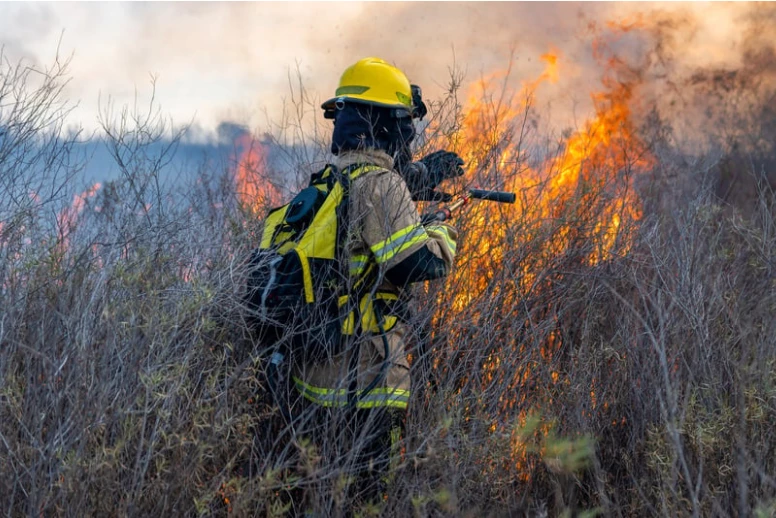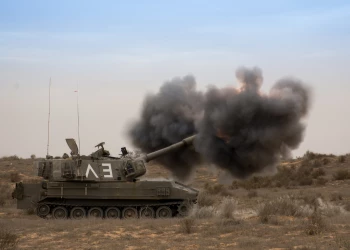The Army’s Quest for a Next Generation Self-Propelled Howitzer
Add bookmark
Howitzers are short-barreled artillery weapons that are generally aimed lower than a mortar but higher than a cannon. First developed in the 16th century, Howitzers have played a significant role throughout history such as its impact on trench warfare in WW1. In 2024, howitzers have progressed to have high muzzle velocity, long barrels, long range, multiple charges and maximum elevation angles greater than 45 degrees, similar to many firearms.
One form of howitzer many militaries are focused on developing are self-propelled howitzers, which are equipped with their own propulsion system to move toward its firing position.
For the US, factors such as conflicts in Ukraine and the Middle East, as well as Chinese military aggression in the Indo-Pacific region, have forced the US army to reassess its own self-propelled howitzer capabilities. This article will provide an overview of the history of self-propelled howitzers in the US, and the Army’s Next Generation Howitzer Program, which is focused on developing an upgraded self-propelled howitzer capability.
M109 Howitzer
The M109 is an American self-propelled 155 mm howitzer that has been continuously upgraded since its introduction in the 1960s.
There have been several iterations of the M109 since its introduction, including:
- M109 (1963): The original version, featuring a 155 mm M126 cannon with a range of 14.6 km and a crew of six. It was powered by a Detroit Diesel engine and had a .50 caliber machine gun for secondary armament.
- M109A1 (1973): Upgraded to a longer-barrel M185 155 mm cannon, increasing the maximum range to 18.1 km. This model was the first significant improvement of the M109.
- M109A2 (1979): Added several Reliability, Availability, and Maintainability (RAM) upgrades, including a longer M185 cannon in a new mount, ballistic protection for the sight, and increased ammo storage (36 rounds).
- M109A3: A rebuild of the M109A1 to A2 standards. The A3 included most improvements from the A2 version but was often applied to older units retrofitted to newer specifications.
- M109A4: Similar to the A2/A3 but with enhancements for Nuclear, Biological, and Chemical (NBC) protection. It featured improved engine reliability, better filtration systems, and a manual override for the hydraulic clutch.
- M109A5: Replaced the M185 cannon with the more powerful M284 155 mm cannon, increasing the range to 30 km with rocket-assisted projectiles. It retained many of the A4’s NBC and RAM improvements.
- M109A6 "Paladin" (1994): A major modernization of the M109, incorporating improvements in armor, survivability, digital fire control systems, and a range of 40 km with the M982 Excalibur guided round. Crew size was reduced to four, and the engine was upgraded for greater power.
- M109A7 (2015): The latest variant, featuring a new chassis, improved powertrain with a 675 hp engine, and digital systems to enhance overall performance. It also includes modernized armor and automation systems to further enhance firing accuracy and battlefield survivability.
Throughout the history of the M109, the DoD has made several attempts to replace the Howitzer. For example, in 1994, the Army attempted to replace the Paladin with the Crusader program, an advanced 155-mm self-propelled howitzer, but this was canceled in 2002. A second attempt, the Non-Line-of-Sight Cannon (NLOS-C), was part of the Future Combat System (FCS) program but was also canceled in 2009.
The latest effort, the Extended Range Cannon Artillery (ERCA) program, began in 2018 with the goal of extending artillery range from 30 km to 70 km. However, issues during live-fire testing, particularly excessive wear on the gun tube, caused the Army to discontinue the ERCA program in April 2024.
The Army’s Next Generation Howitzer (NGH) Program
Following the cancelation of the ERCA program, the Army launched its Next Generation Howitzer Program, which is the fourth attempt by the Army to extend the firing range of its howitzers. A new artillery modernization study completed in 2024 recommended focusing on autonomous artillery systems with improved range and mobility.
Given the results of this study, NGH aims to provide highly mobile, survivable, and versatile fire support under a wide range of operational conditions, offering extended range and better cross-country mobility. It will also target enhancing crew survivability, reduce setup times, and deliver improved fire support compared to towed howitzers.
The program will build on past testing with the ERCA, including a 2022 test that hit a target at 70 km with an Excalibur shell. The Army issued a request for information (RFI) in August 2024 to explore existing or near-field systems, including foreign artillery, for potential acquisition. Responses were due in September and may lead to a formal acquisition process.
The Army requested $8 million in this year’s NDAA for FY2025 for NGH research, development, and testing, focusing on evaluating existing prototypes, testing U.S. ammunition compatibility, and assessing mobility, survivability, and transportability of potential systems.
A Congressional Research Service report from September 2024 stated US Congress may have several concerns surrounding NGH, namely the cancellation of the previous two attempts by the Army to upgrade its Howitzer capabilities. Congress also wants an early estimate of the total cost of the NGH program, including developmental, acquisition, and operational expenses, as well as the associated costs for artillery munitions. Since NGH focuses on existing systems, Congress expects the program to be less expensive than prior failed programs like Crusader, but still requires thorough oversight to ensure cost-effectiveness.























